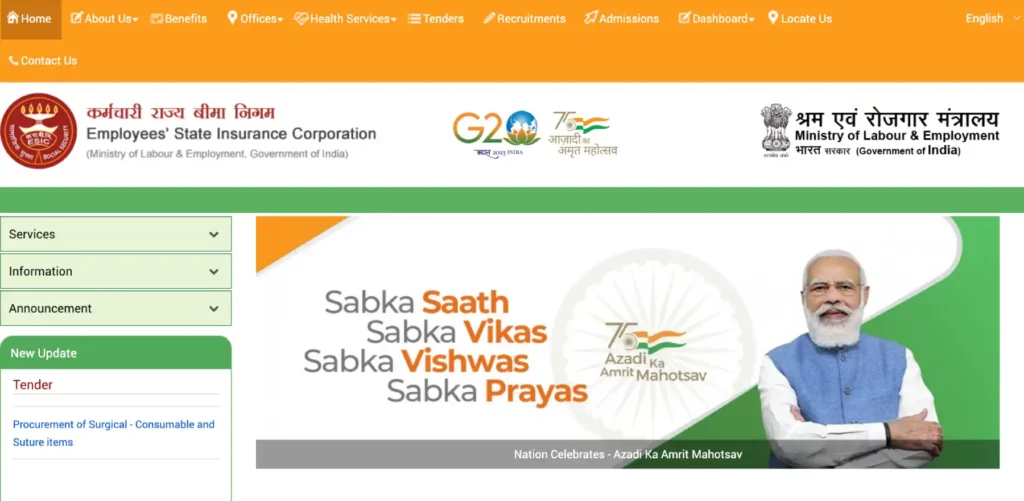ESI is self-contributing social security and health insurance scheme. The full form of ESI is Employee State Insurance. The scheme offers financial assistance to an employee during sickness, maternity and employment injury. Furthermore, it also covers for medical expenses of the employee’s family members. Establishments or non-seasonal factories with a total number of employees of more than 10 (in some states, 20 employees) and a maximum salary of INR 21,000 should register with ESI. Furthermore, the entity has to register within 15 days from the date of its applicability. This article covers the different wage inclusions and exclusions per the ESI Act and ESI Calculation in detail.

ESI Contribution
ESI contribution in respect of an employee comprises both the employer’s contribution and the employee’s contribution. The contribution rates are fixed and are revised from time to time. The latest Employer’s ESI contribution rate in 2025 is 3.25% of the wages payable to the employee. While the employee’s ESI contribution percentage 2025 is at 0.75% of the wage. Furthermore, in case the daily average wage of an employee is up to INR 137, they are exempt from the contribution payment. However, employers have to pay their contribution to such employees.
How to Calculate ESI with Example?
The ESI contributions are based on the wages paid to the employees. The employer and employee ESI contributions are as follows:
- ESI Employer’s Contribution Rate: 3.25% of the payable wages
- ESI Employees Contribution Rate: 0.75% of the payable wages
ESI Calculation Formula
Total ESI Contribution = Employer’s Contribution + Employees Contribution
How to Calculate ESI for Rs. 15000 Salary
Let’s understand the ESI contribution calculation with an example. Let’s Mr Anuj works in an establishment that qualifies under the ESI Act. The monthly wage for Mr Anuj is INR 15,000. The contribution towards the Employee State Insurance Scheme is as follows:
Employer Contribution = INR 15,000 * 3.25% = INR 487.50
Employee Contribution = INR 15,000 * 0.75% = INR 112.50
Total ESI Contribution = 487.5 + 112.5 = INR 600
Wages according to ESI Act
Not all allowances, bonuses, and payments made to employees become part of their wages. Following is the list of inclusions and exclusions under the wage component as per the ESI Act:
Inclusions
The following allowances, bonuses and payments are part of wages for computing the ESI contribution:
- Suspension Allowance or Subsistence Allowance
- Overtime Allowance
- Wages Paid During Layoff
- House Rent Allowance
- Night Shift, Heat, Gas and Dust Allowance
- Conveyance Allowance
- Medical Allowance
- Newspaper Allowance
- Education Allowance
- Drivers Allowance: Under certain conditions
- Food/Milk/Tiffin/Lunch Allowance: It will not be treated as wage under certain conditions.
- Wages and Dearness Allowance for Unsubstituted Holidays
- Interim Relief
- Attendance Bonus
- Expenditure on Annual/ Periodical Services Contract: Contribution is payable only on the amount paid for annual or periodical service contracts.
Exclusions
The following allowances, bonuses and payments are not part of wages for computing the ESI contribution:
- Washing Allowance
- Annual Bonus
- Incentive Bonus
- Production Bonus
- Inam/ Ex-Gratia Payment
- Annual Commission
- Service Charges
- Gazetted Allowance
- Exgratia Payment During Strike for Travelling Expenses
- Saving Scheme
- Hamals/ Coolies Employed at a Particular Time: Outside the premise of the establishment, it is not considered as part of the wage. While, if the service is rendered inside the premise of the establishment, it will be considered part of the wage.
- Expenditure on Servicing of Machines
- Commission to Dealers/Agents
- Service Contract
- Payment made on account of un-availed leave at the time of discharge.
- Commission on advertisement secured for Newspapers, if not paid to the regular employee
- Fuel allowance/Petrol allowance
- Entertainment allowance
- Shoe allowance
- Payment made on account of gratuity on discharge/retirement
- Payment made on encashment of the leave
Employee State Insurance Contribution Collection
An employer is responsible for paying his contribution for each employee and deducting employee contributions from wages bills. Furthermore, the employer must pay the contributions to the Corporation within 15 days of the last day of the calendar month in which the contributions are due.
The Corporation has authorised certain State Bank of India branches and a few other banks to accept payments on its behalf.
Contribution Period and Benefit Period
Under the ESI scheme, the contribution period is 6-month. Therefore, there are two contribution periods in a year. Furthermore, there is a corresponding benefit period of a 6-month duration for each contribution period. Following are the contribution periods and their corresponding benefit period:
- For the contribution period from 1st April to 30th September, the corresponding cash benefit period is 1st January of the following year to 30th June.
- For the contribution period from 1st October to 31st March of the following year, the corresponding cash benefit period is 1st July to 31st December.
The contribution period concept benefits an employee whose salary increases beyond the threshold limit.
For example, if your salary was INR 20,000 in May 2022, and from June 2022, it becomes INR 23,000. The contributions till 30th September 2022 will be considered on the revised salary of INR 23,000 for ESI calculation purposes. Post which, you will not qualify for the ESI contribution. Since the salary threshold is INR 21,000. However, you will be eligible for the corresponding benefit period (1st January 2023 to 30th June 2023).
Frequently Asked Questions
Employees can claim medical benefits, sickness benefits, maternity benefits, dependant’s benefits, disablement benefits and funeral expenses.
The employer files monthly contributions through the ESIC portal for all its employees after duly registering them.
As per the Employees State Insurance Act of 1948, the ESI limit is INR 21,000.




























Show comments